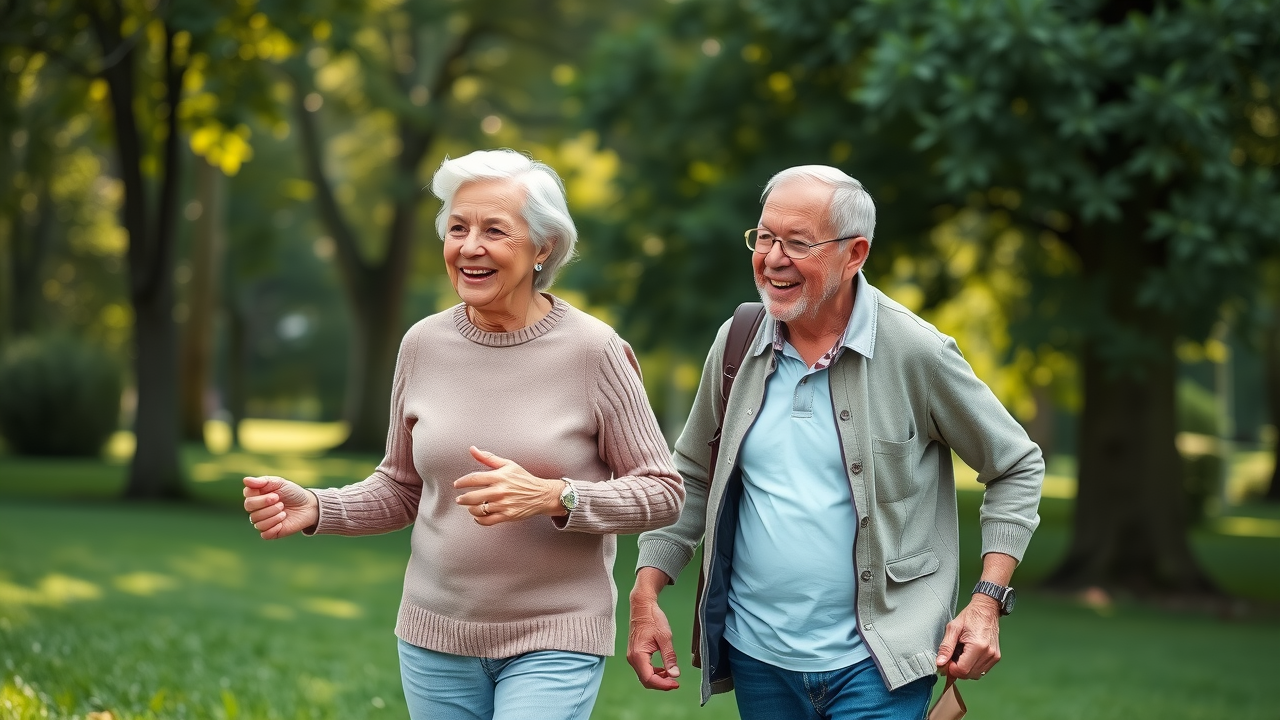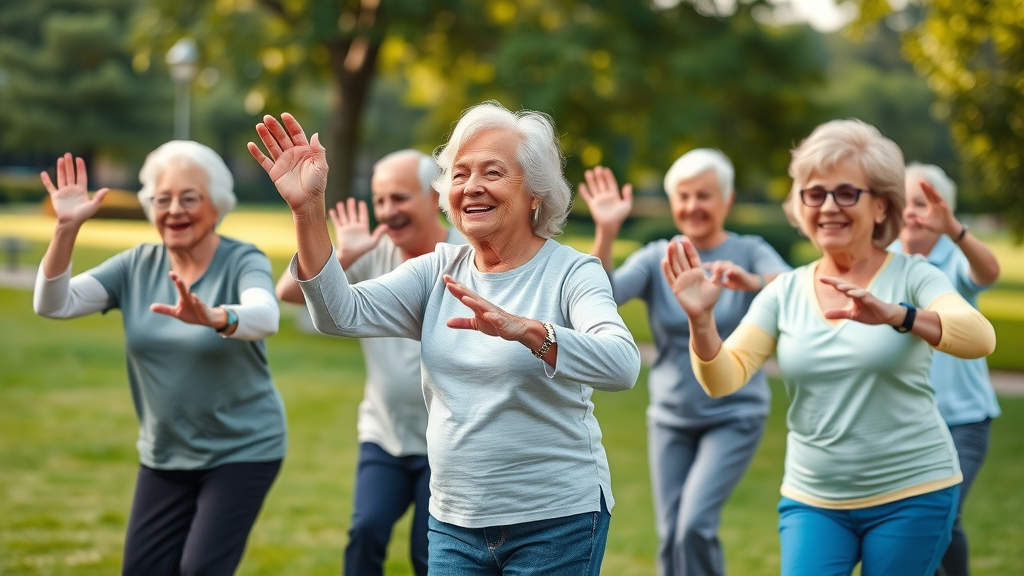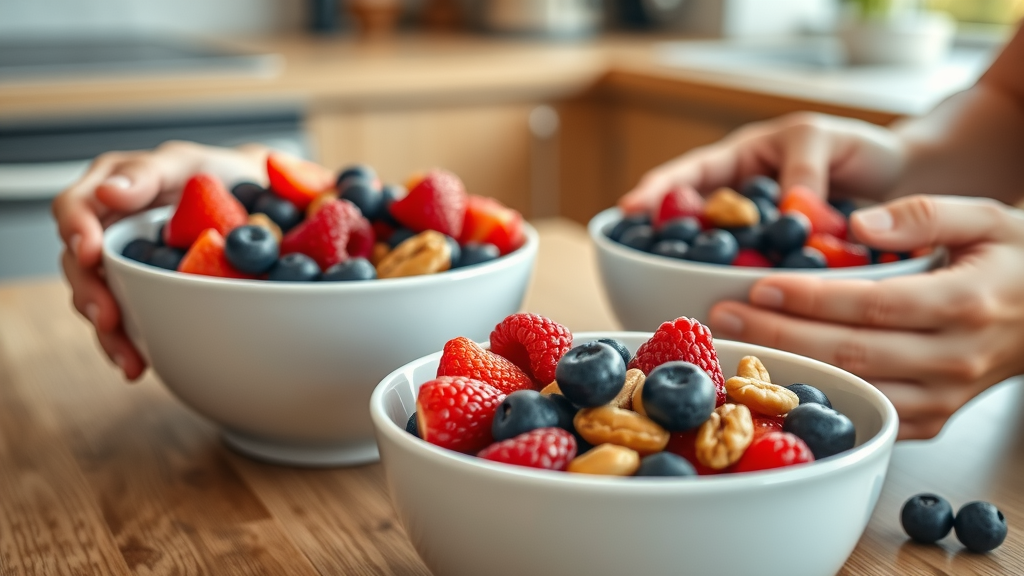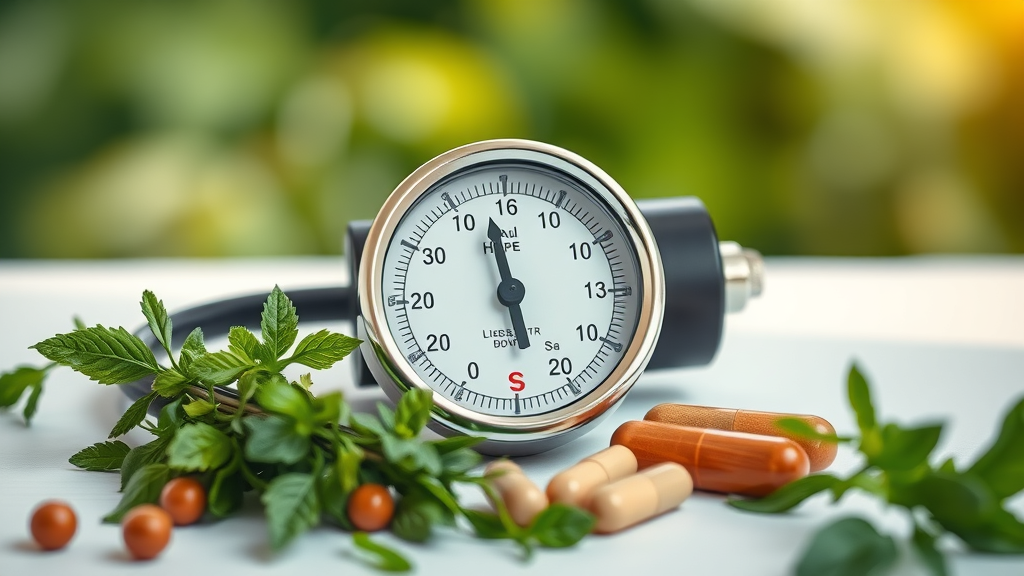Did you know that optimized eating habits and regular exercise can boost energy levels in older adults by up to 30%? It's a transformative fact that many overlook when thinking about healthy aging. If you're seeking simple ways to feel younger, stay strong, and enjoy a more active life , the secret lies in a balanced blend of smart food choices and physical activity. This guide will uncover the latest senior fitness nutrition energy strategies and provide practical steps to help older adults thrive — both in body and mind.

Surprising Truths About Senior Fitness Nutrition Energy and Enhanced Energy Levels
Many older adults believe that low energy is an inevitable part of aging, but emerging research is telling a different story. Studies consistently show that nutrition and physical activity are powerful levers for maintaining robust energy levels and supporting overall wellbeing. A landmark study from the national institute on aging found that targeted changes in eating habits and exercise routines could help older adults elevate their daily energy and maintain vitality well into their senior years.
A healthy lifestyle rich in fruits and vegetables, lean proteins, healthy fats like olive oil, and complex carbohydrates such as brown rice can make it easier to stay active and enjoy greater independence. Proper nutrition not only fights fatigue but also supports muscle mass, cognitive function, and a stronger immune system—key to healthy aging and longevity. By focusing on these strategic adjustments, older adults can experience more consistent energy and foster a sense of empowerment over their health trajectory.
How Senior Nutrition Energy Directly Impacts Energy Levels in Older Adults
Today's science confirms that the right mix of diet and exercise can make an immense difference in how older adults feel day to day. As we age, our metabolism, muscle mass, and ability to recover from exertion change. That's why it's critical to rethink nutrition and physical activity for this vibrant life stage. Thoughtful meal planning, packed with lean proteins and healthy fats, and a regular exercise program can restore energy and enhance quality of life for older adults.
The relationship between nutrition and energy is bidirectional: nutrient-rich meals provide the fuel needed for an active lifestyle , while being physically active helps regulate appetite, promotes muscle strength, and supports healthy body weight. For many older adults, even small adjustments to eating habits —such as increasing water intake, choosing whole over processed foods, and eating at consistent times—can dramatically raise energy levels, making it easier to stay engaged in daily life.
In addition to these foundational strategies, understanding how to enjoy carbohydrates without causing blood sugar spikes can further support steady energy throughout the day. For practical guidance on balancing carb intake and maintaining stable energy, explore these blood sugar management strategies for seniors that complement a holistic approach to nutrition and fitness.
Understanding the Role of Diet and Exercise for Energy in Older Adults - senior fitness tips
"Research shows that healthy eating paired with regular physical activity is the cornerstone of maintaining energy and independence for older adults."
A balanced diet rich in whole foods and regular, gentle movement are synergistic. These lifestyle choices are proven to help older adults stay strong , support healthy aging, and feel their best. Building a daily routine that integrates both proper nutrition and movement encourages brain health, supports healthy immune function, and elevates mood—a holistic approach that goes far beyond just energy management. By fostering consistent habits and consulting a care provider when needed, seniors can maximize their independence and enjoy long-term wellness.
Key Benefits: Why Older Adult Fitness Nutrition Energy Matters
Prioritizing senior fitness nutrition energy isn’t just about momentary boosts—it's about building a foundation for lifelong vibrancy and independence. Older adults who combine healthy eating with regular exercise experience improvements in both physical and cognitive health. They’re more likely to maintain muscle mass, stay strong, and enjoy a better quality of life , while also reducing their risk of chronic diseases like heart disease and diabetes.
Proper nutrition and physical activity foster a positive feedback loop: as energy levels rise, so does motivation to stay active, further reinforcing healthy eating and lifestyle choices. Both scientific consensus and everyday experience agree—focusing on senior fitness and nutrition offers an essential path to aging gracefully and energetically.
Supports healthy aging and longevity
Helps older adults stay strong and independent
Reduces risk of chronic disease
Elevates daily energy levels and mood
Comparison of Energy Levels in Older Adults Based on Fitness and Nutrition Habits |
||
Habit Type |
Energy Level |
Typical Mood & Activity |
|---|---|---|
Balanced diet & regular exercise |
High & consistent |
Motivated, social, active lifestyle |
Poor nutrition, sedentary |
Low & variable |
Fatigued, withdrawn, limited activity |
Occasional activity, unbalanced meals |
Moderate |
Some participation but frequent energy dips |
What You'll Gain from Optimized Senior Fitness Nutrition Energy - nutrition for seniors
By embracing proven strategies for senior fitness nutrition energy, you can unlock a range of rewards almost immediately. Here’s what older adults and caregivers will learn:
Immediate actionable steps to enhance your energy levels
Insight into practical diet and exercise choices for older adults
Clear guidance on building sustainable eating habits and staying active
From understanding the importance of hydration and nutrient density to discovering senior fitness tips for gentle but effective activity, you’ll come away with confidence and a clear plan tailored for healthy aging. Consistency is key, and we’ll outline routines that are achievable, enjoyable, and realistic for every older adult—no matter your starting point or current activity level.

Formulating the Ideal Diet and Exercise Plan for Senior Fitness Nutrition Energy
Crafting the right approach to senior fitness nutrition energy involves balancing accessible, flavorful foods with safe, age-appropriate physical activity. A typical day should include varied, colorful options that provide essential vitamins, minerals, and proteins while accommodating personal preferences and any dietary restrictions. For older adults, focusing on whole grains, lean proteins, and fresh produce is critical for maintaining vitality, muscle mass, and an active life.
Equally important is building movement into daily routines. This needn’t mean hours at the gym; even light aerobic activity, regular stretching, or simple strength exercises at home can yield big benefits. By consulting a care provider or fitness program specialist, older adults can personalize their plan and make steady, safe strides toward peak energy and independence.
Best Eating Habits for Older Adults to Maximize Everyday Energy
Prioritizing nutrient-dense foods and balanced meals
Managing meal timing for steady energy levels
The core principle is to fuel up with foods that deliver long-lasting energy without dramatic spikes and crashes. That means filling your plate with complex carbohydrates (like brown rice or whole-grain bread), lean proteins (skinless chicken, fish, tofu), and healthy fats (from olive oil, nuts, seeds). Try to eat at regular times each day to stabilize blood sugar and minimize fatigue. Smaller, more frequent meals can also support energy levels and make it easier to digest foods and drinks.
Integrating Physical Activity to Boost Senior Fitness Nutrition Energy
Examples of gentle aerobic exercise and staying active
Tips for building a safe and effective activity routine
Gentle aerobic exercise is an excellent way to boost circulation, support heart health, and elevate energy. Walking, swimming, cycling, and dancing—all done at a comfortable pace—help maintain muscle mass, joint flexibility, and balance. Including two to three sessions of strength training with light dumbbells can help older adults maintain muscle and bone health, making everyday activities safer and easier. For those new to exercise, short sessions throughout the day are just as beneficial. Partner with friends or join classes at a local community center for social motivation and added enjoyment.

exercise and diet for older adults: Fitness and Energy Synergy
Combining regular exercise and proper nutrition creates a powerful health synergy for older adults. Strength training assists in maintaining muscle mass, which naturally declines with age but is vital for everyday mobility and sustaining energy levels. Activities such as lifting light weights, resistance band exercises, or even bodyweight movements can help older adults stay strong and independent.
Complementing strength routines with flexibility and balance exercises—like yoga, Tai Chi, or simple daily stretching—can reduce the risk of falls and support healthy aging. This comprehensive approach ensures a balanced, active lifestyle and not only boosts immediate energy, but also protects bone density, joint function, and overall quality of life as seniors continue to age.
Strength training to maintain muscle mass and energy
Flexibility and balance exercises for healthy aging
Prioritizing Healthy Eating for Energy: Smart Choices for Senior Fitness Nutrition Energy
Food is fuel, especially for older adults looking to sustain high energy levels. Prioritizing variety and balance is crucial—think colorful salads, hearty soups with lean proteins, and whole grain sides instead of overly processed snacks or sugary treats. Every meal offers an opportunity to nourish the body and support healthy aging. Don’t forget about hydration: consistent water intake can make a significant difference in mental alertness and physical stamina.
Loading up on nutrient-dense options helps maintain a healthy metabolism and supports vital organs. Foods like whole grains, leafy greens, lean protein, and healthy fats from sources such as olive oil and nuts deliver sustained energy and promote heart and brain health. When preparing foods and drinks, sticking to moderate portion sizes and mixing up flavors and food groups will help older adults enjoy eating and staying active.
Top Foods to Boost Energy for Older Adults
Whole grains, lean protein, and colorful vegetables
Snack and meal ideas for sustained energy
Consider starting the day with oatmeal topped with berries and nuts , or scrambled eggs cooked in olive oil with a side of spinach and whole grain toast. For lunch and dinner, lean proteins with brown rice and roasted vegetables are satisfying and energy-enhancing. Nut butter paired with fruit or yogurt, bean salads, and homemade trail mix also make excellent snacks for older adults seeking all-day fuel.
Building Consistent Eating Habits That Support Senior Fitness Nutrition Energy
Strategies for mindful eating and portion control
Dealing with common older adult nutrition challenges
Creating healthy eating habits doesn't require drastic changes overnight. Mindful eating—paying attention to hunger signals, eating slowly, and savoring flavors—can prevent overeating and improve digestion. Portion control is also important: use smaller plates, pre-portion snacks, and avoid distractions during meals to focus on enjoyment and satiety.
Older adults may face unique hurdles such as changes in appetite, dental concerns, or chronic medical conditions. To overcome these, plan meals in advance, keep healthy and convenient snacks at hand, and work with a care provider or nutritionist to address specific dietary needs. Solutions like soups, smoothies, and soft-cooked foods can make it easier to obtain balanced nutrition even when challenges arise.

Tracking Progress: Monitoring Energy Levels Through Fitness and Nutrition
Monitoring progress is essential for staying on track and making meaningful improvements in senior fitness nutrition energy. Keeping a simple journal of meals, snacks, and activity can reveal patterns that affect how you feel, while periodic check-ins with a healthcare provider ensure that dietary changes and new routines are both safe and effective for older adults.
Many seniors find it helpful to use a weekly chart for logging meals and exercise, which helps reinforce healthy eating and movement habits. If fatigue persists, adjust your plan—perhaps with more hydration , varied exercise, or nutrition tweaks—until you land on a routine that leaves you energized and motivated.
Sample Weekly Meal and Activity Chart for Senior Fitness Nutrition Energy |
||||
Day |
Breakfast |
Lunch |
Dinner |
Activities |
|---|---|---|---|---|
Mon |
Oatmeal, berries, nuts |
Chicken salad, brown rice |
Salmon, sweet potato, spinach |
30-min walk, stretching |
Tue |
Greek yogurt, whole grain toast |
Eggs, whole grain wrap |
Ribeye Steak, steamed veggies |
Light strength training |
Wed |
Fruit smoothie, nut butter toast |
Lentil soup, whole grain roll |
Grilled chicken, brown rice |
Group exercise class |
Physical Activity and Healthy Aging: Staying Active for Maximum Energy
Benefits of regular movement in maintaining healthy aging
Guidelines for safe exercise for older adults
Staying active is one of the best ways for older adults to support healthy aging and maintain a high quality of life. Even moderate physical activity has been repeatedly shown to improve energy levels , enhance mood, and reduce the risk of chronic disease. Movement promotes cardiovascular health, preserves muscle mass, improves balance, and strengthens bones—every bit as important for a vibrant, active life as healthy eating.
Safety should always come first. Older adults should select activities suited to their fitness level and consult a care provider before starting new routines. Begin with gentle movements—such as walking, swimming, or gardening—and gradually increase duration or intensity as comfort grows. Consistent physical activity helps older adults remain engaged, self-sufficient, and energized on a daily basis.

Answers to Common Senior Fitness Nutrition Energy Questions
What are 5 foods that seniors should eat every day?
Leafy greens
Berries
Whole grains
Protein (beef, pork, chicken, fish, tofu)
Low-fat dairy or alternatives
How to boost energy levels in seniors?
Eat balanced meals
Move regularly
Prioritize hydration
Rest well
Manage chronic conditions
Reverse vitamin deficiencies with all-natural dietary supplements
What is the number one fruit that seniors should eat everyday?
Blueberries: High in antioxidants that support cognitive health and energy
What foods give seniors energy?
Complex carbohydrates for sustained release
Fresh fruits
Nuts and seeds
Fish and lean meats
Legumes

FAQs About Senior Fitness Nutrition Energy for Older Adults
How much physical activity is safe for older adults?
Most older adults benefit from at least 150 minutes of moderate-intensity activity spread over the week. Always start slow and gradually build up, and consult your care provider if you have health concerns.What are simple meals that raise energy levels?
Simple energy-boosting meals include oatmeal with fruit, grilled chicken and vegetables, or bean and rice bowls. Whole, unprocessed ingredients deliver sustained fuel.How can seniors maintain eating habits with dietary restrictions?
Focus on adaptable recipes and meal prepping. Work with a nutritionist to find alternatives for foods you need to avoid and find creative ways to meet your nutritional needs.What easy exercises can be done at home to support healthy aging and energy?
Chair yoga, light weightlifting, and walking in place are excellent at-home exercises that keep the body strong and support overall energy.

Key Takeaways for Mastering Senior Fitness Nutrition Energy
Adopt healthy eating and stay active for peak energy
Focus on whole foods, mindful routines, and incremental workouts
Track progress, adjust habits, and consult healthcare providers regularly
Unlock Your Best Years – Start Elevating Your Senior Fitness Nutrition Energy Today
Empower yourself to enjoy every moment: take simple steps to boost your energy with senior fitness nutrition strategies designed just for you. Stay strong, eat well, and make each day your healthiest yet.
As you continue your journey toward better energy and healthy aging, it's also important to be mindful of the foods you choose every day. Some common items in our diets may carry hidden health risks that can undermine your wellness efforts. For a deeper look at which foods to watch out for and how to make safer, more informed choices, discover the essential insights in this guide to the dirtiest foods you eat daily . Taking this next step will help you refine your nutrition plan, avoid unnecessary pitfalls, and truly maximize the benefits of your senior fitness and energy routine.
To further enhance your understanding of how nutrition and fitness can boost energy levels in older adults, consider exploring the following resources:
“Best Energy Foods for Older Adults: What to Eat and What to Avoid”
By incorporating the insights from these articles, you can develop a more effective approach to enhancing energy through diet and exercise.
 Add Element
Add Element  Add Row
Add Row 



Write A Comment